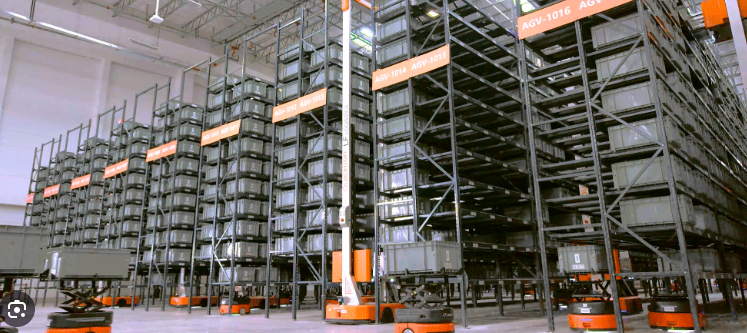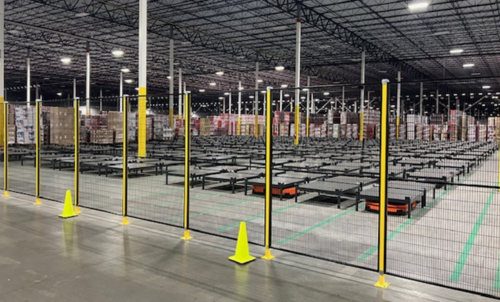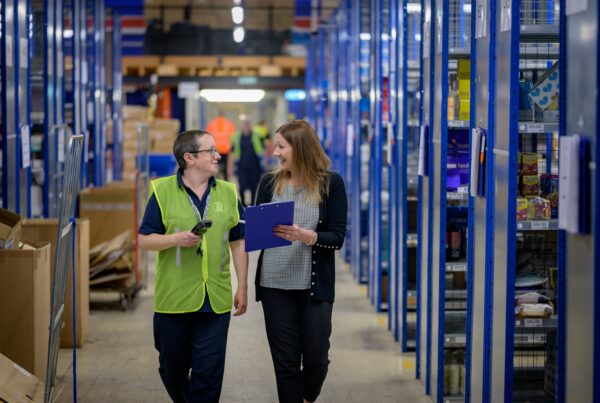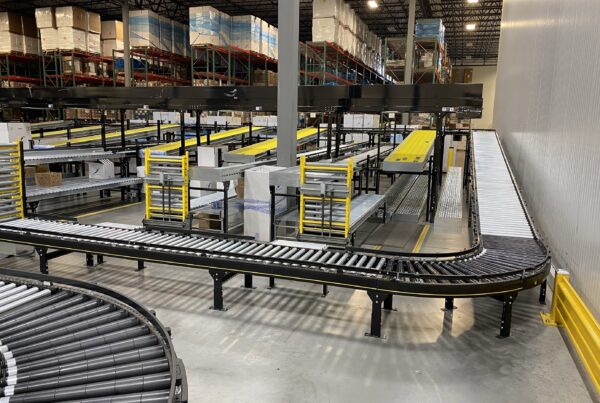Autonomous Mobile Robots (AMRs) are transforming the landscape of warehouse and logistics operations, introducing a new level of efficiency, flexibility, and innovation. With a strong presence in the U.S. market, AMRs are rapidly becoming essential tools for businesses looking to streamline their processes, enhance productivity, and respond effectively to an increasingly competitive landscape.
Seamless Transportation and Picking
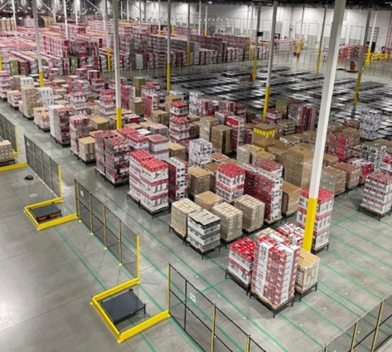 One of the primary functions of AMRs is their ability to transport goods autonomously within warehouse environments. With advanced navigation technologies such as LIDAR, computer vision, and artificial intelligence, these robots can intelligently navigate their surroundings, avoiding obstacles, and optimizing routes to ensure timely deliveries. AMRs can operate in complex environments with varying layouts and changing conditions, making them adaptable to diverse operational scenarios.
One of the primary functions of AMRs is their ability to transport goods autonomously within warehouse environments. With advanced navigation technologies such as LIDAR, computer vision, and artificial intelligence, these robots can intelligently navigate their surroundings, avoiding obstacles, and optimizing routes to ensure timely deliveries. AMRs can operate in complex environments with varying layouts and changing conditions, making them adaptable to diverse operational scenarios.
This capability significantly reduces the reliance on manual labor, allowing warehouse staff to focus on higher-value tasks that require human intervention and expertise. AMRs not only improve efficiency but also contribute to a safer working environment by minimizing the risk of accidents that can occur when workers are manually transporting heavy goods.
Advanced Robotic Sorting Systems
In addition to their transportation capabilities, many AMRs are equipped with sophisticated robotic sorting systems that employ machine learning algorithms. These systems automate the sorting process, categorizing items with speed and precision while minimizing errors. This is especially beneficial in high-volume environments where accuracy is critical.
Automating sorting tasks leads to faster turnaround times, allowing businesses to react more promptly to customer demands and enhance their order fulfillment capabilities. With AMRs handling the sorting, warehouses can achieve a smoother workflow and improve overall operational efficiency.
Integrating Diverse Inventory Management
One of the standout features of AMR technology is its ability to facilitate the integration of various systems and manage different inventory types within the same operational footprint. This flexibility allows businesses to optimize space utilization and handle diverse products at the same outbound pick stations.
AMRs can be programmed to work with multiple inventory types, such as bulk items, small parts, or fragile products, without the need for significant adjustments in the workflow. This capability enhances the functional versatility of warehouses, enabling them to accommodate different operational scenarios without compromising efficiency.
Moreover, by allowing businesses to mix various technologies, AMRs enable a swift and seamless flow of goods from storage to shipping. This adaptability is crucial in today’s fast-paced eCommerce environment, where rapid changes in consumer demands necessitate a logistics approach that can keep pace.
Why AMRs Stand Apart from AGVs
While both Autonomous Mobile Robots (AMRs) and Automated Guided Vehicles (AGVs) play vital roles in logistics, they are fundamentally different in terms of navigation and flexibility. AGVs typically follow fixed paths using physical guidance systems, such as magnetic strips or rails, and require predefined routes for operation. This limits their ability to adapt to changes in the warehouse layout or navigate around obstacles spontaneously.
In contrast, AMRs utilize advanced technologies like SLAM (Simultaneous Localization and Mapping) to understand and navigate their environment in real time. This allows AMRs to make on-the-fly decisions, changing their paths as necessary based on obstacles or alterations in the workspace. This level of adaptability makes AMRs particularly well-suited for dynamic warehouse environments, ensuring higher operational efficiency.
Scalability and Adaptability
AMR solutions are designed to be highly scalable, making them suitable for warehouses of all sizes—from small distribution centers to expansive fulfillment operations. Their modular nature allows for easy integration with existing systems, making it simple for businesses to enhance their operations incrementally.
As organizations grow or shift focus, AMRs can be adapted to accommodate evolving needs without significant reconfiguration, which is a critical advantage in a fast-changing market landscape. This scalability not only protects initial investments but also ensures that businesses can continuously improve their operational capabilities. Unlike traditional AGVs that follow predetermined paths or require physical guides, AMRs navigate intelligently using onboard sensors and maps—making them ideal partners for automated storage and retrieval systems.
Predictive Maintenance and Data Insights
Advanced AMR systems come equipped with analytics tools that provide valuable insights into performance, efficiency, and maintenance needs. By continuously monitoring robot activity and system performance, businesses can harness predictive maintenance strategies that prevent equipment failures before they happen.
This proactive approach to maintenance helps organizations avoid costly downtime and optimize productivity. Furthermore, the data collected from AMRs can be analyzed to inform operational decisions, streamline processes, and improve workflows. Utilizing insights gleaned from AMR operations enables companies to enhance their strategies and respond more effectively to market demands.
Conclusion
Autonomous Mobile Robots are revolutionizing the logistics and warehousing industry, offering innovative solutions that enhance efficiency, flexibility, and operational adaptability. With their ability to autonomously transport goods, automate sorting, and manage diverse inventory types effectively, AMRs are poised to play a pivotal role in shaping the future of logistics.
As technology continues to evolve and integrate into everyday operations, the presence and capabilities of AMRs will only grow, paving the way for a more automated, data-driven, and responsive supply chain. By investing in AMR technology, businesses are not just keeping pace with industry developments; they are positioning themselves at the forefront of a logistics revolution that prioritizes speed, efficiency, and customer satisfaction.
 Skip to main content
Skip to main content
